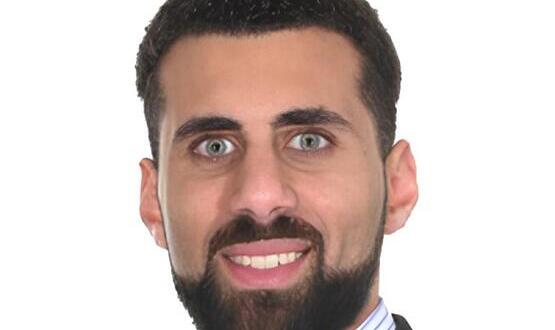The very image of a leader
- 18 November 2013

The Christie NHS Foundation Trust was the undoubted star of the show at the awards ceremony for the EHI Awards 2013 in association with CGI.
The trust’s PACS web portal won the ‘outstanding work in healthcare imaging informatics’ award, its radiology result acknowledgment project won the ‘best use of IT to promote patient safety’ award and chief clinical information officer Dr Rhidian Bramley won the first ever ‘CCIO award for clinical informatics leadership’.
This record of success has been a long time in the making. Dr Bramley has worked at The Christie, a tertiary centre specialising in cancer care, for 12 years. Over that time, he has pushed hard to make sure that the trust’s IT systems are able to support the hospital’s clinical work.
Bridging gaps
A firm believer in the idea that IT should be driven by clinical need, one of his first achievements at the hospital was a change management programme to bridge the gap between informatics and clinicians.
“I think I’m a bit belligerent, in that I won’t give up when I’ve got an objective to achieve. What I try and do is unblock the barriers,” he says.
The Christie has gone on to adopt ‘agile’ approaches to development that emphasise customer satisfaction and the ability to adapt to changing requirements.
“You try and remove dependencies, and measure yourself by your success in delivering software and change that actually helps patients, rather than by other project milestones that aren’t meaningful from a clinical perspective,” Dr Bramley explains.
With his focus on the clinical perspective, Dr Bramley was also an early supporter of the EHI CCIO Campaign, which was set up in 2011 to encourage all NHS organisations to appoint a chief clinical information officer to lead on IT and information projects.
One of the first CCIOs to be appointed, he says he was inspired to back the campaign by a belief that strong local leadership was needed as the contracts placed by the National Programme for IT came to an end.
“I felt there was a need for local organisations to take up more leadership because, with the dismantling of the national structures, local organisations have to pick up responsibility that was previously more centrally co-ordinated.”
A career at The Christie
Despite his longstanding interest in IT, Dr Bramley never considered a career in computers: he has always, he says, wanted to be a doctor.
He carried out his medical training in Manchester, and in 1991 worked at The Christie as a house officer. For the next ten years he worked at different hospitals in Manchester and the North West, before returning to the Christie in 2001.
A number of other opportunities arose at the same time, he says, but The Christie was the obvious choice: “It’s got a worldwide reputation, it’s got a great community feel, and it’s got some very capable talented people. It’s a very rewarding and positive experience working here.”
The decision to specialise in radiology came early in his career, he says: “I was looking for new challenges, and as a clinician I spent a lot of time seeking advice from radiologists about how to further investigate the patient.
“I thought, ‘This is pretty cool.’ I was also quite excited with the combination of the diagnostic ability that it provided and the fact that you could do some intervention and some therapeutic procedures – you could actually start to bridge those divides by doing interventional radiology.”
The experience of setting up a web-based forum for radiology trainees, which attracted thousands of members, showed him the benefits of being able to share information on a large scale.
From there, he became involved in supporting a variety of IT initiatives, including Integrating the Healthcare Enterprise, which addresses the importance of information-sharing standards, and the national roll-out of picture archiving and communications systems in the UK.
Having visited Hammersmith Hospital, Dr Bramley was inspired by the work of Dr Nicola Strickland and her colleagues in making it the UK’s first film-less hospital. He became involved in the national PACS and Teleradiology Group, later to become the UK Imaging Informatics Group.
Dr Bramley designed a web-based forum for the group, which remains extremely lively to this date, and served as its chair.
The biggest change in a generation
During his tenure as chair, Dr Bramley was heavily involved first in the push to make digital imaging part of NPfIT and then in the roll-out in the North West.
The arrival of picture archiving and communications systems and related technologies made a huge difference, he says. “It’s the biggest change in radiology in a generation.
“It completely transformed the way that we work. It’s made the service we provide more efficient, safer and much higher quality.”
Many of The Christie’s projects, such as the regional PACS portal that won the imaging award, focus on increasing collaboration; and Dr Bramley says he is “always trying to push the boundary out beyond the trust.”
Another example of this is The Christie’s PET-CT referral hub that has also won business from NHS Wales. “Through the web, any clinician across the North West and Wales can refer in, and there are notifications of patient appointments and when the results are available.
“They can just click on the link and it will automatically open the reports but also the imaging. It’s integrated with the PACS portal so they can see the actual findings.”
Keeping busy…
Dr Bramley doesn’t have time to rest on his laurels. He has three roles – as a clinical radiologist, CCIO, and clinical director of radiology – which, he points out, interact to deliver the best patient care.
The next projects he hopes to work on are a patient portal, for which he hopes to gain national funding, and a national referral hub. “We take national and regional referrals as well as local referrals, so we want to have a system where people can do that officially from wherever they are.”
He is also optimistic about the future of NHS IT and information projects more broadly. In trusts throughout Manchester and the North West, he says, the end of the national contracts has led to a sense of excitement about what can be delivered locally.
He also feels it has freed trusts to focus on the aims of projects, rather than on the technology or its delivery schedule. “Our highest priority is to improve patient care through delivery of software and services,” he sums up.




